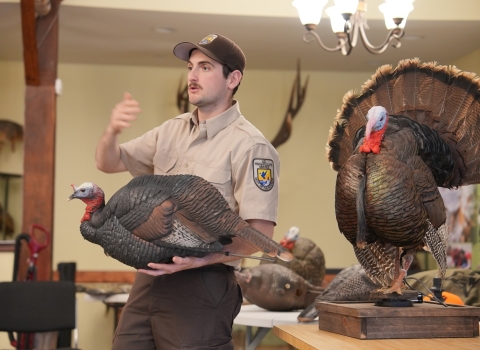Update: The transit proposal was adopted with minor amendments and will go into effect on February 23, 2023.
A private plane, two personal attendants, and your favorite snacks: a first-class experience reserved for the rich, the famous… and pandas.
Bei Bei, the beloved 4-year-old giant panda (Ailuropoda melanoleuca) who was born at the Smithsonian’s National Zoo in Washington, D.C., received such first-class treatment on his way to China in 2019 to participate in a cooperative breeding program. On a private flight donated by FedEx, the 240-lb panda flew in comfort accompanied by a zookeeper, a veterinarian, and a full supply of apples, bamboo, and sweet potatoes. After a 16-hour flight, Bei Bei arrived safely at his destination.
Unfortunately, this degree of attention and care is not afforded to all wildlife during transport. Proper care, including sufficient space and access to fresh water, is not always implemented or enforced, even though it is required. As a result, containers may be overcrowded, poorly ventilated, or unsanitary. This presents several risks, including potential injury, illness, or death of individual animals and the spread of disease among and between species.
A study on legal international trade of 7.5 million live animals between 1988 and 2001 found mortality rates ranging from 0.65 percent among mammals to 3.14 percent for reptiles and 4.96 for amphibians.1 While these percentages may seem low, they can translate to large numbers of dead animals when millions are transported annually. Consider, for example, the average 3.4 million reptiles shipped every year that are protected under the Convention on International Trade in Endangered Species of Wild Fauna and Flora (CITES); a 3 percent mortality rate would equate to more than 100,000 dead reptiles every year.
Poor transport conditions can also stress animals and disrupt their immune systems, leading to a higher risk of disease spread and animals falling ill during and after transit. Inadequate conditions and lack of safety measures (i.e., proper packaging or barriers) also increase the chance of pathogen transmission, which could have implications for zoonoses, diseases spread between animals and humans. In some cases, this can affect the health and well-being of transit staff, border agents, wildlife inspectors, and other frontline workers involved with live animal shipments.
CITES is an international treaty that regulates international wildlife trade, and it requires its member countries (Parties) to ensure that all species included under CITES Appendices are transported in compliance with the International Air Transport Association (IATA) Live Animal Regulations (for animals), the IATA Perishable Cargo Regulations (for plants), and the CITES Guidelines for the Non-Air Transport of Live Wild Animals and Plants.
Despite their importance for wildlife and people, these regulations are not always consistently implemented. One challenge is that getting copies of the IATA regulations (typically $300 USD per book per year) can be expensive for CITES Parties. Additionally, Parties rarely have enough inspectors or expertise for the volume and complexity of wildlife being transported. Regulations also differ depending on whether a CITES-listed animal is traveling internationally versus domestically.
To improve transport conditions for CITES animals and plants, the United States worked with six other Parties to submit a proposal (CoP19 Doc. 52) to the 19th meeting of the Conference of the Parties to CITES, underway in Panama from November 14-25, 2022. The U.S., Nigeria, Canada, Côte d'Ivoire, Kenya, Mexico, and Senegal are recommending that Parties have better access to and training on the IATA transport regulations. The proposal recommends collaborating with IATA to make key content of the IATA Live Animals Regulations and IATA Perishable Cargo Regulations accessible to all Parties free of charge on a secured platform. The recommendation also encourages Parties to apply these regulations to the domestic portion of an international CITES shipment and to share best practices in live animal and plant transport at a workshop. Overall, the proposal aims to improve the implementation of these existing regulations to better safeguard CITES-listed species and the humans facilitating their transport from injury and illness.
1Schultz, C. 2003. Transport Losses of CITES-protected and Non-protected Animal Species. Report on Research and Development Project 899 86 340 of the Federal Agency for Nature Conservation.






